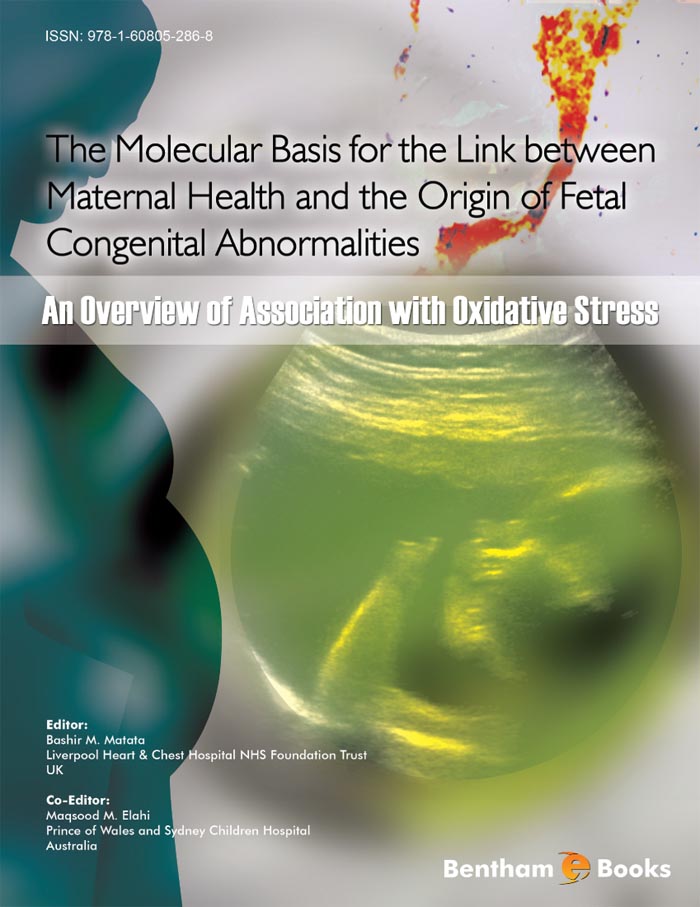Reactive oxygen species (ROS) are produced as by-products of mitochondria electron transport chain. At moderate concentrations (yet unknown acceptable ranges at various developmental phases), ROS functioned in normal physiology by regulating enzymes and redox-sensitive gene expression. The cell utilizes a body of machinery to balance oxidative molecules, including ROS scavengers (e.g., thiols, vitamin C and E) and detoxifying enzymes (e.g., superoxide dismutase, glutathione reductase). Excessive ROS can cause oxidation of proteins, lipids, and DNA. It is known that such unbalanced oxidative capacity may lead to oxidative stress that is implicated in the aetiology of many diseases such as aging, cancer, diabetes, and cardiovascular disease.
Oxidative stress is a common feature of many commonly known or suspected risk factors of or conditions associated with adverse (poor or excessive) fetal growth and/or preterm birth, such as preeclampsia, diabetes, smoking, malnutrition or excessive nutrition, infection or inflammation. Plausibly, oxidative stress might be the key link, underlying the superficial “programming” associations between adverse fetal growth or preterm birth and later elevated risks of the metabolic syndrome, type 2 diabetes and other disorders. Adverse programming may occur without affecting fetal growth, but more frequently among low birth weight infants, merely because they more frequently experience known or unknown conditions with oxidative insults.
Oxidative stress programming may operate either directly through the modulation of gene expression or indirectly through the adverse effects of oxidized lipids or other molecules at critical developmental windows and therefore resetting/programming the susceptibility to the metabolic syndrome and other disorders. Because the placenta serves as a barrier against or quencher of oxidative insults to maintain the homeostasis of foetus’ intrauterine environments, it is not a surprising observation that preterm infants are more susceptible to programming in early postnatal life, because preterm infants have to experience equivalent intrauterine development stage during postnatal development in an oxygen-rich environment. This fact justifies the main goal of this book: to investigate the susceptibility of biological systems to oxidative insults that likely depends on its resilience and maturity stage at the time of insult. And develop that there could be different critical time windows (prenatal or even postnatal) in “programming” different diseases. Plausibly, prenatal and early postnatal periods are the most critical “windows” to oxidative stress programming insults.
The first chapter offers to the reader a self-contained theory of the role of maternal nutrition and associated oxidant stress in the development of the fetal cardiovascular system. Chapters 2-4 contain new and in our opinion, important concepts on the effects of maternal nutrition on a number of areas: offspring fertility; the importance of the peri-conceptional period on long-term development; fetal programming and hypothalamic-pituitary-adrenal axis outcome and epigenetics and epigenetic dysregulation and cell growth retardation. In chapter 5, the authors discuss more precisely the endothelial dysfunction during cardiac development and the significance of cardiovascular disease risk factors associated with increased ROS and the subsequent decrease in vascular bioavailability of nitric oxide. A detailed body of evidence is presented for the impact of oxidative-nitrosative stress during maternal pregnancy on fetal development in animal models and also the association with the onset of cardiovascular conditions in adult humans. Specifically the presence of ROS in circulating blood as the key intermediary related to vascular injury and organ dysfunction has been highlighted. In addition, the evidence that describes the unique nature of relationship between cell-signalling, transcriptional mechanisms and oxidative-nitrosative stress in the progression of coronary heart disease have also been discussed.
In chapters 6-9, the focus is on the fetal and neonatal programming based on evidence from clinical practice. In particular, the discussion revolves around the probability of oxidative stress and its contribution to the pre-pubertal environment. As mentioned earlier the aim if this monograph is two folds: first to discuss the issues around maternal and fetal metabolic dysfunction in pregnancy disease and its association with vascular oxidative and nitrosative stress. Second to introduce this textbook as an avenue for future discussion on possibilities of further developments in this area, with a view that a diversity of opinions have been covered particularly in the direction in which the current research is moving.
The first editor (BM) would like to dedicate this book to his wife Aliya, children Luqman, Leila and Claire for their support. In addition, this editor would like to acknowledge the help of Ms Shirley Ratcliffe for assistance in editing the manuscripts.
The second editor (ME) would like to dedicate this book to his mother Mrs Fehmida Sultana who always helped him, not only in overcoming many difficulties in his personal life, but she also encouraged him to broaden his fields of interest and to enrich his personal experiences. The present book is the outcome of this wonderful cooperation and friendship between the two authors which, hopefully, will continue for still many years to come.
We would like to thank Prof. Kenton Zehr for writing the foreword and Bentham Science Publishers, for their support and efforts.
Bashir M. Matata
Liverpool Heart & Chest Hospital NHS Foundation
United Kingdom
Maqsood M. Elahi
The Liverpool Heart & Chest Hospital NHS Foundation Trust
Thomas Drive, Liverpool
United Kingdom

